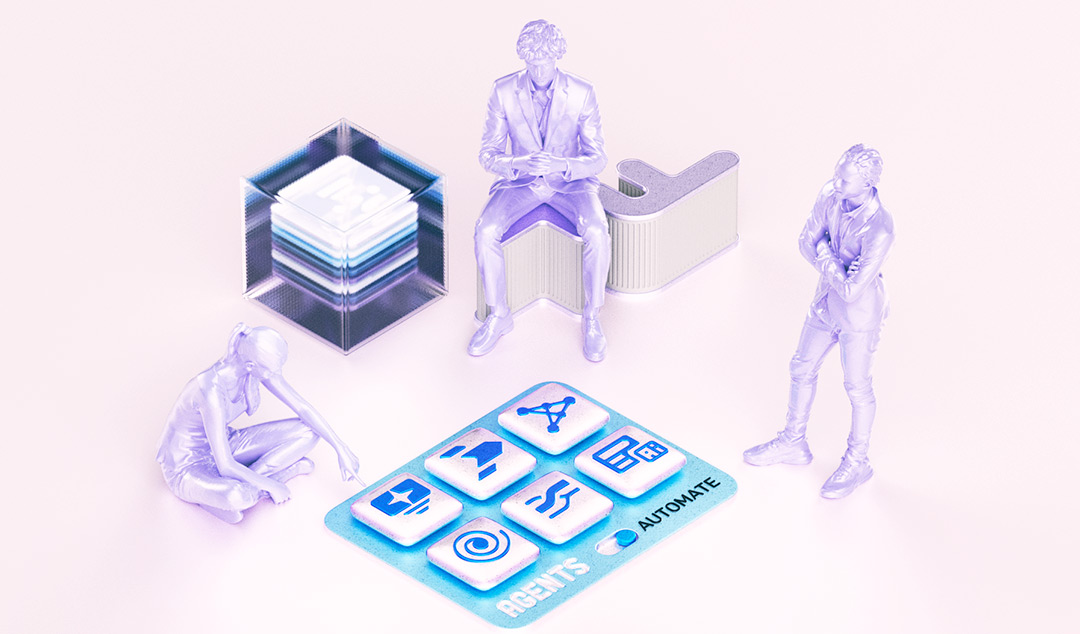Different Ways to Use AI to Augment Software Testing
A detailed look at how different software testing tools use AI to enhance testing, including visual testing, unit testing, quality optimization, and performance testing.

The infusion of AI technology has done wonders for software testing in recent times. AI and machine learning methods implement problem solving and reasoning algorithms to improve and automate software testing.
With an evolving testing paradigm, leveraging AI can help speed up testing, minimize defects, improve accuracy, and enforce an overall faster time-to-market.
AI can be leveraged to augment software testing in many ways. Technology providers use different approaches to implement AI in their solutions to add value to the testing experience. From visual testing and quality analytics to test optimization, AI makes its presence felt in several testing platforms available today. Here is a brief analysis of how these platforms use AI to augment software testing.
Quality Analytics and Quality Gates: Sealights
Sealights is a cloud-based service that helps enforce better software quality control enterprise-wide, based on a predefined quality policy. The aim is to introduce the enforcement of quality analytics and quality intelligence across every single stage of the entire software development lifecycle.
At its core, Sealights requires administrators to define what they term “quality gates” based on the overall quality policy. These “gates” are predetermined points in the development process where quality testing is carried out using AI and smart analytics.
This allows testers to be more data-centric in defining testing requirements and can help accelerate the decision-making process.

Sealights’ implementation of AI is distributed across three areas. The first, Test Gap Analytics, involves using AI and Big Data analytics to pinpoint development areas that need to be tested and where there is a requirement to develop new tests. Developers can use single test types or multiple tests to generate test coverage data, which indicates what percentage of the code needs testing, while focusing on the most important areas of the code.
Then, there is the Quality Risk metric. This identifies untested code changes in the software. The system can look at code that was modified during the development process. Modified code can result in test gaps, and the platform identifies code areas that represent a quality risk for this reason. Once again, AI comes into the picture to identify particularly vulnerable or high-impact areas of modified and untested code.
Apart from identifying test gaps, Sealights also helps with identifying core testing methodologies in use to test important areas of the code. By implementing these AI-driven features, Sealights makes it possible for organizations to stay on top of the testing process during the entire development cycle, supplying clear, actionable insight that can help refine the testing.
Unit Test Optimization: Ponicode and Diffblue
Unit testing is a critical part of the software development process, and Ponicode and Diffblue are vendors that use emerging AI technologies to simplify and enhance this particular type of testing.
Since unit testing is often considered a long, arduous process in coding, it does not always get the time and effort allocated to it that it needs. This can result in unit tests being poorly run, manipulated in certain ways, or done without altogether. This is a conducive area for AI to step in and solve these issues.

With Ponicode, unit tests can be created in one click, creating a welcome relief from time-consuming manual unit test creation.
Ponicode also leverages AI to generate smart input suggestions. This can help in improving overall code coverage and deliver more accurate results, even in edge cases.

Diffblue also acts as a major time saver in unit testing by using the power of AI to automatically write entire suits of unit tests that would otherwise require long durations of time to create manually. Devs can use their IntelliJ plugin for a more interactive test creation process, with the plugin generating unit regression tests for bulk utility code. This encourages Test-Driven Development and frees up developers to write code while the unit tests cover critical and complex code areas.
Visual Testing: Applitools
Visual testing becomes a lot more effective, accurate, and fast if the test can identify specific objects in the UI based on shared characteristics instead of going pixel-by-pixel. Applitools implements Visual AI to test and validate the look and feel of a UI.

Applitools employs AI and Deep Learning to accomplish this.
Their tool, Applitools Eyes, makes use of their cognitive vision technology, which can detect differences between two displays.
Ordinarily, these cases would require the creation of multiple tests with hundreds of lines of code. With Applitools, a smart visual scan can replace this activity and save significant time and effort, while maintaining a high degree of reliability.
Applitools Eyes can be employed to carry out visual testing across many different web browsers, while covering multiple display sizes and resolutions. This innovative use of AI produces results that are equally or often more accurate than manual testing.
UI Functional Testing, Visual Testing, and Performance Metrics: Functionize
Functionize is a modern, innovative platform that leverages AI to combine UI functional testing, visual testing, and performance metrics integrated inside one solution.
This comprehensive intelligent testing platform not only allows you to create automated tests without the need for code, it also solves the painful problem of test debt.
Most organizations today still depend heavily on manual testing. This is because traditional automated test scripts require too much time to maintain and quickly become unreliable. Functionize solves this problem by using big data and machine learning to understand the intent of your tests. So, your tests are less likely to break, which means you’re more likely to trust the test results and can finally increase your automation coverage. Machine learning technology collects and analyzes millions of datapoints from applications under test, and then learns from changes in the applications over time. This allows tests to autonomously stay up to date and significantly reduce the number of tests that need to be kept up to date manually.

Functionize allows you to create complex end-to-end tests incorporating a mix of tests across the UI, API, file exports, databases, two-factor authentication, and much more. But not only that, you can also create visual tests to compare the full screen or specific elements against previous points in time. Like Applitools, Functionize’s visual tests are much more than just a pixel-by-pixel comparison, so it’s more accurate and able to test closer to the human eye.
To help you test even faster, Functionize provides the Functionize Test Cloud, a built-in cloud environment where you can run parallel tests on-demand. You can run tests across browsers, from different geographies, and even incorporate test data management to run data-driven tests. This full-featured testing platform also provides a multitude of native integrations to popular DevOps tools such as test management, CI/CD, Jira, Slack, and PagerDuty.
Key Concepts to Ponder
With these emerging AI technologies enabling vendors to create and offer unique and innovative software testing solutions, the entire process of testing can evolve over time, with many of common problems and bottlenecks being eliminated. There are a variety of technology providers offering different ways to use AI to augment software testing. To try an AI-augmented end-to-end intelligent testing platform for yourself, sign up for a free trial at functionize.com.











